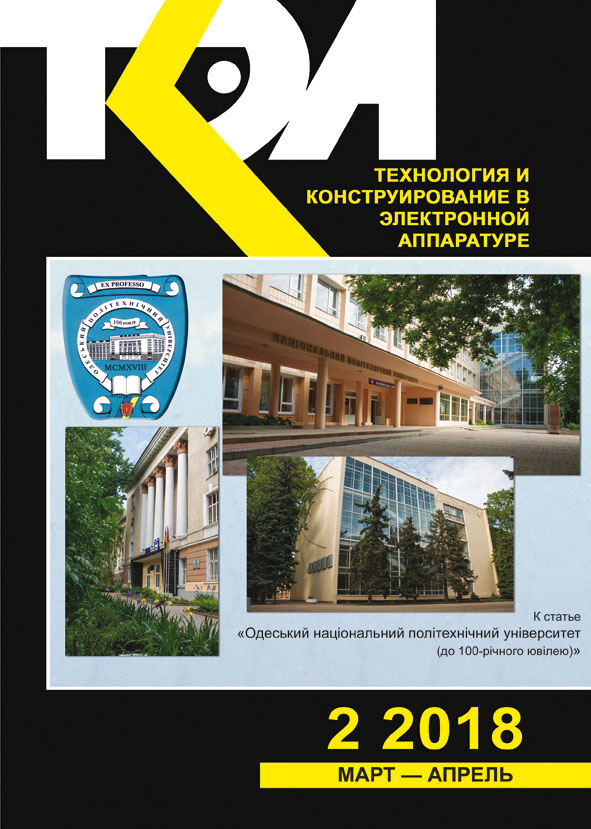Method for expert choise of industrial automation digital components on the basis of Markov’s model
Abstract
Expert evaluation and reasonable selection of digital components in the microelectronic market is a complex and responsible task. For its solution, the known methods of carrying out expert estimations do not fit fully in connection with the laboriousness of the results processing. The development of an expert choice method for digital components that allows you to quickly obtain a generalized collective expert evaluation (CEE), evaluate the consistency of expert opinions and make informed decisions is a quite actually. The goal of the study is to develop a method for forming a voucher for the selection of digital components of industrial automation systems based on the Markov chain and its verification in the real practical situation. A method is proposed for CEE forming for complex components of automation systems based on the Markov model. When aggregating expert preferences, each alternative is represented as a state of the Markov chain. Next, for the vertices of a Markov graph, the Copeland number is calculated, equal to the difference between the number of arcs entering and leaving the vertex. In collective ranking, alternatives are arranged in descending Copeland numbers. The developed method has a high speed in comparison with the known analogs. The correctness of the proposed method, its efficiency and speed has been confirmed by real expertise and in the process of computer modeling. The executed researches showed that the developed method for the collective expert evaluation forming works 80-200 times faster than the method based on the median Kemeni. The practical significance of the proposed method has been demonstrated on the real expertise carried out at the enterprise «Krioprom» (Odessa, Ukraine) when purchasing a batch of programmable logic microcontrollers within the large-scale project framework for cleaning units automation of industrial air-separation plants.
References
Piganov M.N., Podlipnov G.A. Ekspertnye otsenki v upravlenii kachestvom radioelektronnykh sredstv [Expert assessments in the management of the quality of radio electronic means]. Samara State Aerospace University, 2004, 122 p. (Rus)
Samohvalov Yu.Ya., Naumenko E.M. Ekspertnoe otsenivanie. Metodicheskii aspekt [Expert estimation. Methodical aspect]. Kiev, DUICT, 2007, 262 p. (Rus)
Bury H., Wagner D. Application of Kemeny’s median for group decision support. In: Yu X., Kacprzyk J. (eds) Applied Decision Support with Soft Computing. Studies in Fuzziness and Soft Computing, Springer, Berlin, Heidelberg, 2003, vol. 124, pp. 235-262. https://doi.org/10.1007/978-3-540-37008-6_10
Didehvar F., Eslahchi Ch. An Algorithm for rank aggregation problem./Applied Mathematics and Computation, 2007, vol. 189(2), pp. 1847-1858. http://dx.doi.org/10.1016/j.amc.2006.12.065
Davenport A., Kalagnanam J. A computational study of the Kemeny rule for preference aggregation proceeding. AAAI’04 Proceedings of the 19th National Conference on Artificial Intelligence. San Jose, California, 2004, pp. 697-702. 6. Boltenkov V.A., Kuvaieva V.I., Pozniak A.V. [Analysis of median methods for consensus rank preferences aggregation]. Informatics and Mathematical Methods in Simulation, 2017, vol. 7, no. 4, pp. 307-317. (Rus).
Gehman A.V., Iakunin Iu.Iu., Danichev A.A., Volodin A.A. [Processing of the results of examinations in the register of scientific and technical developments]. Vestnik Sibirskogo Gosudarstvennogo Ajerokosmicheskogo Universiteta Imeni Akademika M.F. Reshetneva [Bulletin of the Siberian State Aerospace University], 2010, iss. 6 (32), pp. 30-34. (Rus).
Hannu Nurmi. Voting Systems for Social Choice. In: Handbook of Group Decision. Part of the Advances in Group Decision and Negotiation book series (AGDN, vol. 4). Springer, 2010, pp. 167-182. doi http://dx.doi.org/10.1007/978-90-481-9097-3
Petrovskiy A.B. Teoriyа prinyаtiyа reshenii [The theory of decision-making]. Moscow, Academy, 2009, 400 p. (Rus).
Saaty T. L., Vargas L. G. Decision Making with the Analytic Network Process Economic, Political, Social and Technological Applications with Benefits, Opportunities, Costs and Risks, N.-Y., Springer Science+Business Media, 2013, 363 р.
Saaty T. L. Prinyаtie reshenii pri zavisimostyаkh i obratnykh svyаzyаkh: Analiticheskie seti [Decision making with dependence and feedback: The analytic network process], Moscow, LKI Ed., 2008, 360 p. (Rus)
Podinovsky V.V., Podinovskaya O.V. [On the incorrectness of the analytic hierarchy process]. Control Sciences, 2011, no. 1, pp. 8-13. (Rus)
Podinovsky V.V., Podinovskaya O.V. [Once again about the incorrectness of the analytic hierarchy process]. Control Sciences, 2012, no. 2, pp. 75-78. (Rus).
Langville A. N., Meyer C. D. Who’s #1? The Science of Rating and Ranking, Princeton and Oxford, Princeton University Press, 2013, 247 р.
Dwork C., Kumar R., Noar M., Sivakumar D. Rank aggregation methods for the Web. In book: Int. Conf. on the World Wide Web, ACM Press and Addison Wesley, 2001, pp. 613-622. http://dx.doi.org/10.1145/371920.372165.
Patchmuthu, R.K., Goh, K.L.A., Singh, A.K. 2011. Application of Markov chain in the PageRank algorithm. In: Proc. of the 3rd CUTSE International Conference, Miri, Sarawak, Malaysia: Curtin University, 2011, pp. 116-121.
Prerna Rai, Arvind Lal. Google PageRank algorithm: Markov chain model and hidden Markov model. Int. Journal of Computer Applications, 2016, vol. 138, no. 9, pp. 9-13. http://dx.doi.org/10.5120/ijca2016908942
Polyak B. T., Timonina A. V. PageRank: New regularizations and simulation models. IFAC Proceedings Volumes, 2011, vol. 44, iss. 1, pp.11202-11207. https://doi.org/10.3182/20110828-6-IT-1002.01870
Nesterov Y., Nemirovski A. Finding the stationary states of Markov chains by iterative methods. Applied Mathematics and Computation, no. 255, pp. 58-65. https://doi.org/10.1016/j.amc.2014.04.053
Turchin V.N., Turchin E.V. Markovskie tsepi. Osnovnye ponyаtiyа, primery, zadachi [Markov Chains. Basic Concepts, Examples, Tasks]. Dnepropetrovsk, Lizun off Press, 2016, 196 p. (Rus).
Volskiy V. I. Protsedury golosovaniyа v malykh gruppakh s drevneishikh vremen do nachala XX veka [Voting Procedures in Small Groups from Ancient Times to the Beginning of the 20th Century]. Preprint WP7 / 2014/02, Moscow, Publ. House of Higher School of Economics, 2014, 76 p. (Rus).
Dixit A. K., Skeath S., Reiley D. H. Jr. Games of Strategy, N.-Y., London, W. W. Norton & Company, 2014, 768 p.
Chervonenko P. P., Boltenkov V. A. Increasing the level of automation of the air purification device in the air separation unit. Automation of Technological and Business Processes, 2016, vol. 8, no. 1, pp. 28-32. (Ukr)
Compute the median ranking according to the Kemeny axiomatic approach [Electronic resource]. URL: https://www.mathworks.com/matlabcentral/fileexchange/52235-compute-the-median-ranking-according-to-the-kemeny-axiomatic-approach (date of the application: 30.03.2018).
Copyright (c) 2018 Boltenkov V. A., Kuvaieva V. I., Chervonenko P. P.

This work is licensed under a Creative Commons Attribution 4.0 International License.

